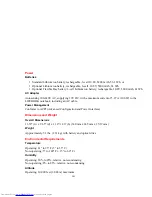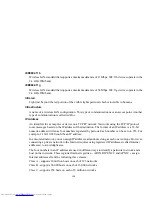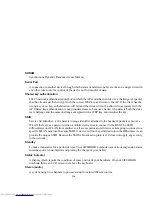
132
IEEE802.11b
Wireless LAN standard that supports a maximum data rate of 11 Mbps. 802.11b devices operate in the
2.4 GHz ISM band.
IEEE802.11g
Wireless LAN standard that supports a maximum data rate of 54 Mbps. 802.11g devices operate in the
2.4 GHz ISM band.
Infrared
Light just beyond the red portion of the visible light spectrum which is invisible to humans.
Infrastructure
A name of a wireless LAN configuration. This type of communication uses an access point. Another
type of communication is called Ad Hoc.
IP Address
An identifier for a computer or device on a TCP/IP network. Networks using the TCP/IP protocol
route messages based on the IP address of the destination. The format of an IP address is a 32-bit
numeric address written as four numbers separated by periods. Each number can be zero to 255. For
example, 1.160.10.240 could be an IP address.
In an isolated network, you can assign IP addresses at random as long as each one is unique. However,
connecting a private network to the Internet requires using registered IP addresses (called Internet
addresses) to avoid duplicates.
The four numbers in an IP address are used in different ways to identify a particular network and a
host on that network. Three regional Internet registries -- ARIN, RIPE NCC and APNIC -- assign
Internet addresses from the following three classes.
Class A - supports 16 million hosts on each of 126 networks
Class B - supports 65,000 hosts on each of 16,000 networks
Class C - supports 254 hosts on each of 2 million networks
















































